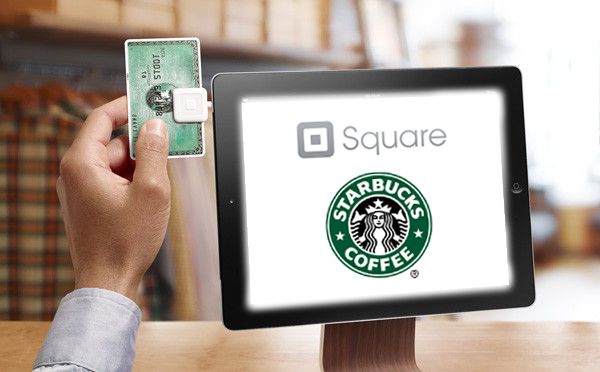Howard Schultz: Starbucks’ Magic Bean
There’s one word in modern business that stands out as a brand that keeps going despite all, one company that seems to embody the never-say-die „lo-fi” corporate culture, a culture that doesn’t rely on tech wonders, software gimmickry or even clever retail channels… That name is Starbucks, and that culture is passion.
It took the company many years and a back-and-forth change in leadership to prove the old adage: if at first you don’t succeed, try and try again. In case of the Seattle-based coffee house that meant first losing Howard Schultz, then getting him back.
Schultz is the Starbucks’ „once and future king”, its CEO, chairman and president, all rolled into one. It wasn’t his domain and his ship to steer since day one, though.
Since its inception back in the 1970s by a trio of teachers and a writer, the company changed its structure, its name, even the product it sold, and in retrospect, all of their changes were for the better. For instance, Starbucks started out as a bean seller, they didn’t even brew coffee. Their first name was a not very appealing (even though very literary) Pequod, later changed to a flashier-sounding Starbucks.

A few years before the 1990s came a-knocking, former employee of the original trio — an ambitious and ruthless upstart called Howard Schultz — had purchased the whole of Starbucks from its founders, becoming the CEO and founder of the new and improved Starbucks. His trademark move since then has been buying out various other coffee chains and transforming them into Starbucks, but that’s clearly not the only reason why the company is still making money — and a lot of it, considering their revenue of USD 13 bln in 2012 alone — so many years after its creation.
 The latest growth spurt the company experiences is neither new nor unpredictable to the company that has seen its ups and downs. In fact, according to entrepreneurial guru Tony Robbins, many companies are operating and growing like people – experiencing youth, adulthood, mid-life crisis, golden years and so on. In that analogy, Starbucks is most likely entering its most productive period right now.
The latest growth spurt the company experiences is neither new nor unpredictable to the company that has seen its ups and downs. In fact, according to entrepreneurial guru Tony Robbins, many companies are operating and growing like people – experiencing youth, adulthood, mid-life crisis, golden years and so on. In that analogy, Starbucks is most likely entering its most productive period right now.
But just like a person growing older, so has this company seen its fair share of growing pains and a pretty severe mid-life crisis.
First, at the tail end of the 1980s, Starbucks tried expanding into the American Midwest, where apparently coffee just wasn’t such a hot commodity, no matter its serving temperature. It took offering the quick pick-me-up to Californians, who at the beginning of the 1990s where only just beginning to realize the potential of such franchises, to make Starbucks profitable once more. In 1992, riding on the energy boost of its caffeine-rich injection into LA, the company had its IPO. It was an unqualified success, raising the company’s worth to more than a quarter of a billion dollars. Just months after the IPO the earnings-per-share ratio shot up to almost a 100 times the original share price.

The real boom, though, required the company to not only sell the flavoursome espressos to the energy-deprived Wall Street yuppies and hungover Hollywood starlets, but to expand outside of the US. Stores in England, Europe, Latin America, Russia followed, and with them – global recognition and Schultz’s overnight ticket to fame. Satisfied with the day-to-day goings-on at the company, Schultz left as CEO in 2000, and his place was taken by Orin C. Smith and then Jim Donald.

The company grew exponentially, opening new markets, purchasing other coffee chains and buying material directly from the coffee bean growers. At one point they have been opening up to seven new cafes a day, an astonishing figure…
Then the second crisis came, a mid-life one, if one were to follow the „getting old” analogy. It’s probably not completely fair to call it that, since it occurred at the time of a global economic recession in 2007 and beyond, but Howard Schultz’s comeback of 2008 did signify that there’s been trouble brewing at Seattle’s best coffee company. In fact, previous CEO, Jim Donald, was asked by the shareholders to step down in 2007, in order to somehow stem the waning customer interest and plummeting share prices.

Schultz had an uphill task ahead of him. In 2007 he was a chairman of the company, but not its CEO. In his recent interview with Oprah, Howard explains that „most of the problems [they] had were self-induced mistakes” and that his retaking of the executive position in 2008 was an effort to restore the company back to its original values. Six hundred stores were closed, more than 1000 workers were laid off. Schultz’s vision was to operate Starbucks like a much smaller company: it had to be driven by passion and not on the premise of making money alone. That seems to be the crucial lesson that Schultz tries to impart — „the pursuit of profit became our reason for being and that’s not the reason that Starbucks is in business…we’re in the business of exceeding the expectations of our customers,” he said in an interview with Forbes. Schultz likes, but doesn’t love coffee, and what he’s really passionate about is „building a company that treats people with dignity and respect.” One of the elements of this approach is making every employee, even a part-time one, a co-owner and shareholder of the company, so that passion and focus of everyone on the company’s well-being is reflected on every level.

Another positive move is providing comprehensive healthcare. It might not sound like much in Europe, but in the US, its current Obamacare woes notwithstanding, offering health insurance for employees is a welcome change. Schultz explains that this is because of his childhood experiences – his father worked a lot but didn’t get any health insurance from his employer, and when he had sustained an injury at work, there was no compensation or financial help available. „When we began Starbucks what I wanted to try to do was to create a set of values, guiding principles and culture,” says Schultz on the subject, explaining the way Starbucks operates. It was perhaps for this reason that he had organized a special conference for the company’s 10 000 managers in New Orleans. At the meet, he encouraged employees to be personally interested in the company’s fortunes. That meeting apparently had a knock-on effect in all Starbucks outlets, a „tidal wave of energy”, according to Schultz.
But simply instilling that kind of passion in your employees is not enough to make the company profitable, and this is why Schultz had to announce further lay-offs and closures. Seven thousand people lost their jobs in 2009, further 300 stores were shut down. Schultz even offered to reduce his own salary, a move which the board happily approved. A total of nearly a thousand stores were closed amid the global recession…

Despite recession-related lay-offs and closing many stores, the idea to offer company’s stock and comprehensive benefits to employees helped put the company on the Forbes’ list of 100 best companies to work for in 2013 and on Fortune’s „Most Admired” list. The change in corporate culture really helped, but Schultz didn’t stop there. During his post-hiatus tenure, the company made a move to re-brand many stores, changed the brand’s logo in 2011, started offering diet low-cal drinks, entered a partnership with Duracell to use special wireless chargers for the smartphones, introduced free Wi-Fi in its stores and even set up completely automated coffee kiosks around the country. Perhaps the biggest innovation was teaming up with Square (with Schultz, until recently, at its helm), a company that provided Starbucks with smartphone payment tech. This is what makes it possible to pay for coffee at a touch of a button or by simply putting a phone in front of the terminal — a sign of the times in many other industries.

Howard Schultz does know how to turn the fortunes around and keep up with the times, that much is certain. Perhaps it’s simply due to the way he operates – much like many successful people, he doesn’t focus on wealth or achieving financial success, but rather on improving and constantly innovating on the basics, so that the end result takes care of itself.
It’s funny, though, how things turn out. In an interview with Oprah, he finally spilled the beans: he never really intended to come back after leaving as CEO in 2000, but had „no second thought whatsoever” about returning in 2008. Good thing he didn’t, otherwise we wouldn’t be able to enjoy a delicious latte now and then. But right now I’d rather have a decaf – it’s getting late!
VOCABULARY
to stand out – wyróżniać się
despite – pomimo
to embody – ucieleśniać
never-say-die – niepoddający się, nietracący nadziei (tylko przed rzeczownikiem)
lo-fi – niskiej rozdzielczości, analogowy (pot.)
to rely on sth – polegać na czymś
gimmickry – tanie chwyty
retail – handel detaliczny
back-and-forth – zmienny (tylko przed rzeczownikiem)
leadership – przywództwo
adage – porzekadło
if at first you don’t succeed, try and try again – do trzech razy sztuka (przysłowie o tym, że nie należy się zrażać niepowodzeniami)
coffee house – kawiarnia
CEO (Chief Executive Officer) – dyrektor naczelny
chairman – prezes
all rolled into one – w jednym (np. o wielu rolach na raz)
domain – domena
to steer – sterować
inception – stworzenie
in retrospect – patrząc wstecz
bean – tu: ziarno kawy
to brew – warzyć
appealing – atrakcyjny
literary – literacki
flashy – szpanerski, modny
to come a-knocking – nadejść, pojawić się (arch.)
former – były
ruthless – bezlitosny
upstart – karierowicz
to purchase – nabyć
founder – założyciel
sb’s trademark move – posunięcie typowe dla kogoś
various – rozmaity
chain – sieć (sklepów, kawiarń)
considering X – zważywszy na X
revenue – przychód, wpływy
growth spurt – okres wzrostu
unpredictable – nieprzewidywalny
ups and downs – wzloty i upadki
entrepreneurial – przedsiębiorczy, tu: związany z biznesem/przedsiębiorcami
youth – młodość
adulthood – dorosłość
mid-life crisis – kryzys wieku średniego
to enter sth – wkraczać do czegoś
a fair share of sth – solidna doza/dawka czegoś
growing pains – początkowe trudności
severe – ostry
at the tail end of sth – na końcu czegoś
hot commodity – chodliwy towar
serving – podawanie (produktu), serwowanie
a quick pick-me-up – małe conieco dla dodania energii, łyk orzeźwiającej kawy/herbaty
to realize – zdawać sobie sprawę z
franchise – tu: marka, sieć (sklepów/kawiarń pod jedną nazwą)
profitable – dochodowy
boost – bodziec, pobudzenie
caffeine-rich – bogaty w kofeinę (pot., tylko przed rzeczownikiem)
injection – zastrzyk
IPO (initial public offering) – pierwsza oferta publiczna akcji przedsiębiorstwa (na giełdzie)
an unqualified success – ogromny sukces
earnings-per-share – dotyczący zysku na akcji (tylko przed rzeczownikiem)
ratio – wskaźnik
share price – cena akcji
flavoursome – aromatyczny
X-deprived – pozbawiony X (tylko przed rzeczownikiem)
yuppie – japiszon, yuppie
hungover – skacowany
starlet – gwiazdka (np. srebrnego ekranu)
to expand – rozszerzać się
recognition – uznanie
overnight – natychmiastowy
ticket to fame – bilet do sławy
day-to-day – codzienny (tylko przed rzeczownikiem)
goings-on – wydarzenia, zdarzenia
exponentially – w postępie geometrycznym, bardzo szybko
cafe – kawiarnia
astonishing – oszałamiający
figure – liczba
comeback – powrót
to signify – oznaczać, znamionować
trouble is brewing somewhere – gdzieś zanosi się na kłopoty
shareholder – udziałowiec
to step down – ustąpić (ze stanowiska)
to stem sth – zahamować coś
waning – słabnący
plummeting – spadający na łeb, na szyję
an uphill task – trudne zadanie
self-induced – wywołany własnoręcznie/na własne życzenie
to retake sth – ponownie coś wziąć
executive – tu: wyższego szczebla kierowniczego, dyrektorski
to restore sth – odtworzyć coś, przywrócić coś (do stanu wcześniejszego/normalnego)
values – wartości, ideały
to lay sb off – masowo kogoś zwolnić
on the premise of sth – przy założeniu, że…, mając na celu coś
crucial – najważniejszy
to impart – przekazać
pursuit of sth – pościg za czymś, poszukiwanie czegoś
to exceed sb’s expectations – przewyższyć czyjeś oczekiwania
to be passionate about sth – pasjonować się czymś
dignity – godność
approach – podejście
part-time – na niepełny etat, w niepełnym wymiarze godzin (tylko przed rzeczownikiem)
well-being – dobrobyt
to reflect – odzwierciedlać
to provide – zapewnić
comprehensive – obszerny, wszechstronny
woes – niedole, problemy
sth notwithstanding – nie mówiąc (już) o czymś, pomijając coś
insurance – ubezpieczenie
welcome – mile widziany
to sustain an injury – skaleczyć się, odnieść obrażenie
compensation – rekompensata
guiding principle – zasada przewodnia
to encourage – zachęcić
fortunes – losy, dzieje
a knock-on effect – efekt domina
outlet – placówka
tidal wave – fala pływowa, ogromna fala
to instil sth in sb – zaszczepić komuś coś, wzbudzić coś w kimś
to announce – ogłosić
closure – zamknięcie
to shut sth down – zamknąć coś
salary – pensja
board – rada nadzorcza
to approve – zaaprobować
amid – pośród, w trakcie
stock – akcje, udziały
benefits – świadczenia socjalne
hiatus – przerwa, tymczasowe zaprzestanie (robienia czegoś, wykonywania jakiegoś zawodu)
tenure – kadencja
to re-brand – unowocześnić/odnowić markę
low-cal – niskokaloryczny (tylko przed rzeczownikiem)
wireless – bezprzewodowy
charger – ładowarka
to set up – założyć
automated – zautomatyzowany
to team up with sb – połączyć z kimś siły
at sth’s helm – u czyjegoś steru/u steru czegoś
to keep up with the times – iść z duchem czasu
due to – z powodu
wealth – bogactwo
to achieve – osiągnąć
constantly – stale
to turn out – skończyć się (jako), wyjść (o sytuacji ogólnej)
to spill the beans – puścić farbę
to intend – zamierzać
second thought – wahanie się
whatsoever – ani trochę
decaf – kawa bezkofeinowa (pot.)
-by Prochor Aniszczuk







